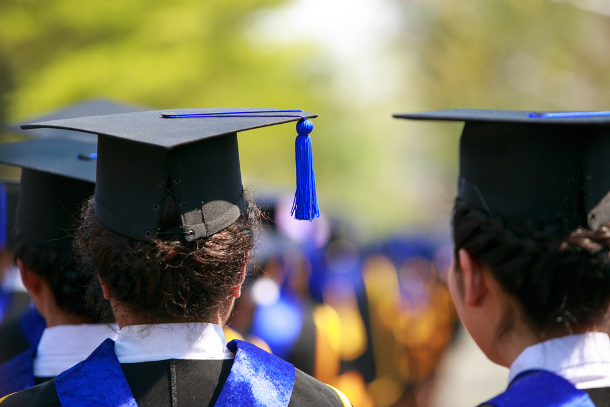British Columbia has failed to live up to its goals in closing the graduation gap between aboriginal and non-aboriginal students in the province, a new report by the B.C. auditor general shows.
Ten years ago, the province committed to almost doubling First Nations' high school completion rates in B.C. by 2015, from 49 per cent to 85 per cent. The new report shows that while the province has made progress, the rates have only climbed to 62 per cent.
Meanwhile, non-aboriginal students currently graduate at a rate of 87 per cent.
"There is a wide and persistently historic gap in graduation rates between aboriginal and non-aboriginal people in Canada," said Auditor General Carol Bellringer.
Bellringer noted that 29 per cent of aboriginal people across Canada aged 25 to 64 didn't have a high school diploma in 2011, compared to 12 per cent of non-aboriginal people.
In B.C., she said, aboriginal students continue to score lower in provincial assessments for reading, writing, and numeracy, show higher rates of special needs designations, and have lower graduation rates.
Aboriginal students are also more likely to get "school leaving certificates," a designation that indicates a student completed an education program but did not graduate. Typically intended for special needs students, four per cent of aboriginal Grade 12 students received certificates in 2013/14, compared to one per cent of non-aboriginal students.
Bellringer put forward 11 recommendations to close the persistent graduation gap, including establishing a system-wide strategy that brings together school boards, superintendents, and aboriginal communities; auditing the impact of existing targeted funding for aboriginal students; and direct ministry intervention when districts aren't making progress.
Education Minister Mike Bernier was not available for an interview, but in a press release said his ministry accepted the auditor's recommendations.
"New initiatives like new provincial K-12 curriculum to address the history and legacy of residential schools and a recently signed protocol with [the First Nations Education Steering Committee] will help to inform this work," it said.
District cooperation needed, says FN committee
The First Nations Education Steering Committee is the closest thing B.C. has to a First Nations school board for on-reserve education, working with bands to communicate their education issues and desires with the federal government.
But it also works with the provincial government to improve aboriginal education in the public system, and with First Nations communities to help them understand government education policies.
The new protocol agreement signed by the province and steering committee builds on other education agreements to improve education outcomes for aboriginal students on and off-reserve.
Described by the province as a "living document," it re-affirms the shared responsibility of both Indigenous governments and the province to ensure aboriginal students receive the same quality of education as their non-Indigenous peers.
But the steering committee's director Debbie Jeffrey said it's another set of agreements -- or a lack thereof -- that's holding back progress. They're known as local education agreements.
While the province provides districts with funding for students in the public system, the federal government covers the education of students living on reserve. Ideally, when students living on reserve want to attend public school, the band signs a local education agreement with the school district, indicating the band will pay for the students' tuition.
In return, the band can use the agreement to negotiate some terms, including what Indigenous-focused courses are offered in the public system and the guidelines for district reporting on student outcomes, like the aboriginal graduation rate.
If a district doesn't want to negotiate an agreement, the federal government pays for on-reserve students' tuition. Jeffrey said that removes districts' incentive to work with First Nations on a government-to-government level to improve aboriginal outcomes. Less than 50 per cent of districts have signed these agreements.
If more of these agreements were signed, she said, aboriginal graduation outcomes would improve.
"We're not stakeholders, we're not education partners -- we are another level of government who have roles and responsibilities with respect to our citizens," said Jeffrey.
BC School Trustees Association President Teresa Rezansoff said everyone involved in aboriginal students' education is working hard to close the gap, but acknowledges there is more work to be done. "It is different from school district to school district and there is no one-size-fits-all when it comes to addressing the needs of students," she said.
For example, her Boundary school district, which has an 82 per cent aboriginal grad rate, has 28 per cent aboriginal students. There are no First Nations bands to collaborate on education with, but they do have an Aboriginal Education Advisory committee.
"Then you're going to have another school district with that same number, or a little bit bigger, of aboriginal students and have multiple bands in their school district," she said. "So coordinating and working altogether can be that much more complex."*
Over the next year the steering committee will be working on a sample template for local education agreements and an agreement toolkit for First Nations to help First Nations engage school districts in a straightforward process, Jeffrey said.
*Story clarified Nov. 6 at 12:25 p.m. ![]()
Read more: Indigenous, Education, BC Politics
















Tyee Commenting Guidelines
Comments that violate guidelines risk being deleted, and violations may result in a temporary or permanent user ban. Maintain the spirit of good conversation to stay in the discussion.
*Please note The Tyee is not a forum for spreading misinformation about COVID-19, denying its existence or minimizing its risk to public health.
Do:
Do not: